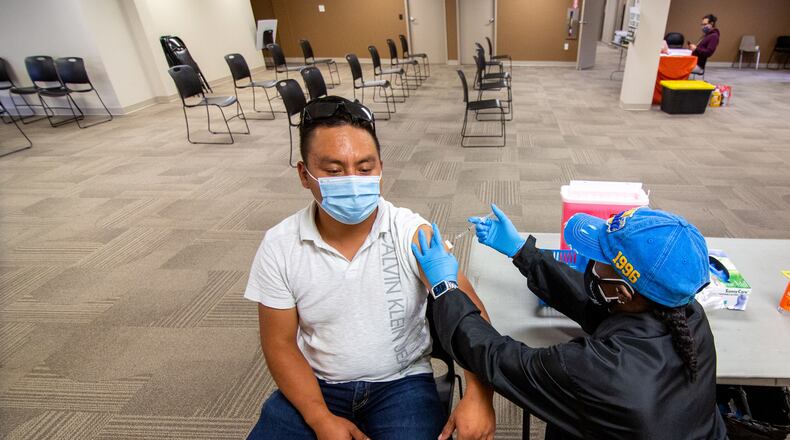The COVID-19 pandemic took a disproportionate toll on the livelihoods of Georgia immigrants, according to a new report published by the Atlanta-based Latino Community Fund in collaboration with Welcoming Atlanta, the city’s Office of Immigrant Affairs.
Georgia findings indicate the pandemic’s impact on employment produced some of the largest disparities:
- Nearly 30% of immigrant respondents across the state indicated they had their hours reduced during the pandemic.
- Twenty-six percent said they had lost a job (compared to 16% and 13%, respectively, for non-immigrant respondents).
- Forty-one percent expressed concern about being able to put enough food on the table for their families, compared with 24% of non-immigrants.
“We had been seeing and experiencing that immigrants were overwhelmingly affected last year,” said Gigi Pedraza, executive director of the Latino Community Fund (LCF Georgia). “What we didn’t have was data structured in a way that showed observations across the state. We now have that with this report.”
Georgia’s data collection included more than 900 anonymous surveys — completed this year over four months beginning in January. Among the respondents, 46% identified as immigrants or children of immigrants — the majority with ties to Latin America, while nearly 44% identified as Hispanic or Latino. Outreach was conducted in English, Mayan, Portuguese and Spanish.
“Mayan communities are growing communities,” Pedraza noted. “We need to start being more inclusive of other folks from Latin America that historically have not been included in these discussions.”
‘Perfect storm’
Labor market analyses over the course of the pandemic suggest that immigrants are overrepresented in the workforces of industries deemed essential. They hold jobs that cannot be completed remotely and bring greater potential exposure to the coronavirus.
The same is true in Georgia, according to Pedraza.
The Georgia study showed 33% of immigrant respondents had access to remote work during the pandemic, compared with 65% for non-immigrants. A smaller share of immigrant respondents felt that their workplaces took appropriate health measures to safeguard against COVID-19.
In addition, Georgia immigrants reported more limited access to healthcare as well as paid sick leave (28% had leave compared to 59% of non-immigrant respondents). Nearly a fifth said they didn’t receive needed medical services, compared to just 7% of non-immigrant respondents.
“When you have jobs that you have to keep to feed your family and they are essential jobs … you may not have the ability to protect yourself for a number of reasons,” Pedraza said. “Yes, you’re going to get sicker. And then when those same folks, if you look at the other findings, are not able to get health care … you have a perfect storm.”
Elsewhere, over a quarter of immigrants worried that their children fell behind academically during the pandemic, compared to 16% of non-immigrant respondents. Nearly 15% of Georgia immigrant households lacked computers, tablets or other devices for schoolwork, compared with 4% of non-immigrant households, according to the study.
“We know that our immigrant and black and brown communities have been disproportionally impacted by COVID-19, but we need to understand how they have been impacted beyond contagion rates,” Atlanta Mayor Keisha Lance Bottoms said in a news release earlier this year announcing the collaboration with LCF Georgia.
Data from the Georgia report helped inform a national study published this summer by the New American Economy, a bipartisan research and advocacy organization that promotes the benefits of immigration reform. That study, titled Understanding the Impact of COVID-19 on Diverse Populations, concluded that immigrant communities and other minority groups “shouldered a greater share of the economic and health-related consequences of the pandemic.”
Lautaro Grinspan is a Report for America corps member covering metro Atlanta’s immigrant communities.
About the Author
Keep Reading
The Latest
Featured


